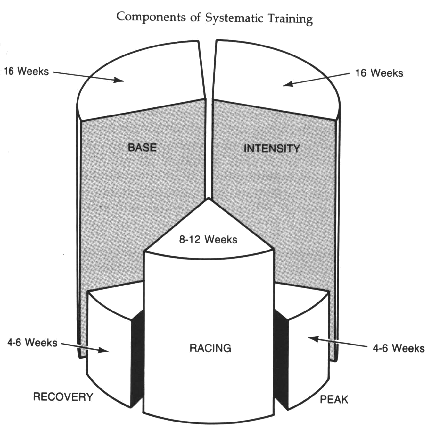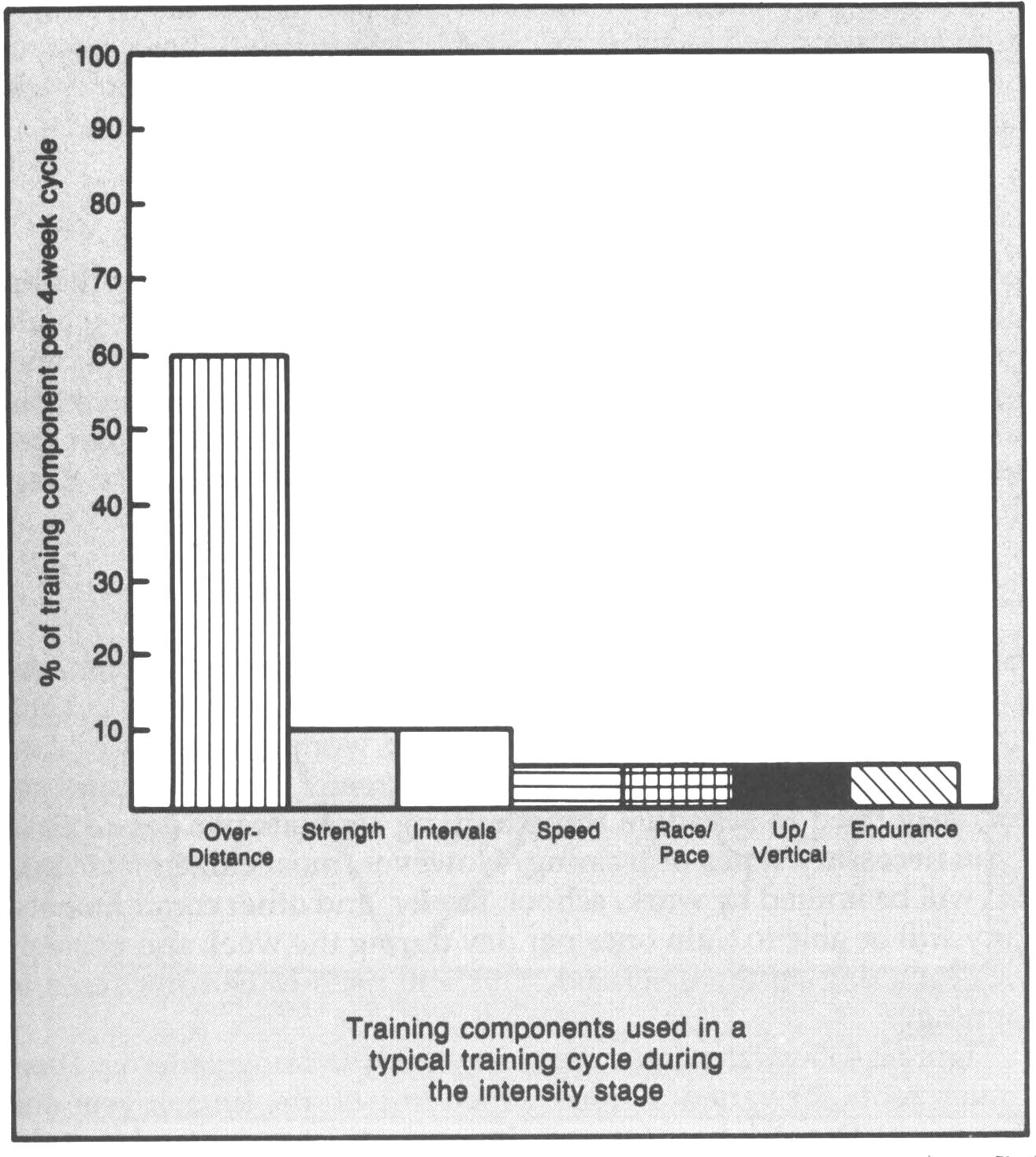
- •Topic 1. Coaching as a job
- •Text 1.1 coaching career
- •Text 1.2 science and practice of training
- •Text 1.3 coaching is my job
- •Self-study Work 1. Is Coaching an Art or a Science?
- •Grammar questions
- •Plan for rendering an article
- •1. The title of the article.
- •2. The author of the article; where and when the article was published.
- •3. The main idea of the article.
- •4. The contents of the article. Some facts, names, figures.
- •Topic 2. Systematic training approach
- •Text 2.1 the training language barrier
- •Text 2.2 different athletes, different needs
- •Text 2.3 a training approach that works
- •Self-study Work 2. 8 Sports Training Principles
- •Passive Voice (Пасивний стан)
- •Topic 3. Components of systematic training
- •Text 3.1 the paths that determine success
- •2. Read the text bellow. Do you share the author’s ideas?
- •Text 3.1 plan objectives
- •1. Read the text bellow. Do you share the author’s ideas?
- •Text 3.2 five training stages
- •Text 3.3 training cycles nature
- •1. Read the text bellow. Do you share the author’s ideas?
- •C ouch Culture: Only a Quarter of u.S. Youth Get Recommended Exercise
- •Self-study Work 3. Periodization of Training
- •Topic 4. Physiological guidelines for systematic training
- •Text 4.1 training stages of the year
- •2. Read the text bellow. Do you share the author’s ideas?
- •Text 4.2a stage I: base (aerobic buildup phase)
- •1. Read the text bellow. Do you share the author’s ideas?
- •Text 4.2b stage II. Intensity
- •1. Read the text bellow. Do you share the author’s ideas?
- •Text 4.2c Stage III: Peak (Taper)
- •1. Read the text bellow. Do you share the author’s ideas?
- •Text 4.2d Stage IV: Racing
- •1. Read the text bellow. Do you share the author’s ideas?
- •Text 4.2e Stage V: Restoration
- •1. Read the text bellow. Do you share the author’s ideas?
- •Specificity and Sports Fitness
- •A Study Shows That You Eat Way More When Watching Action Movies
- •America’s Teens Outscore Adults On Stress
- •6 Breathing Exercises to Relax in 10 Minutes or Less
- •N ews Flash… Harvard Students Cheat, Too
Text 3.2 five training stages
1. Read the text bellow. Characterise presented training stages.
Ideally, preparation for competitive endurance sports includes five stages: Base, Intensity, Peak, Competition (or Race), and Restoration. The number of weeks given each stage depends on the number of competitive seasons planned per year and your experience and condition. The physiological purposes of the five training stages will be explained in detail further. It is necessary at this point only to understand that there are essential physiological developments that take place by stages in a progressive fashion during the weeks and months preceding competition. Figure 1.1 illustrates the five training stages for an athlete participating in one competition season per year. It is helpful in planning to consider actual dates for competitions, training camps/ clinics, and any medical or physiological testing desired during the year.
2 .
Answer the questions on the text.
.
Answer the questions on the text.
1. How many stages does preparation for competitive sports include ideally? 2. What are these training stages? 3. Does the stages’ length depend on a kind of sport? 4. What does the number of weeks given each stage depend on? 5. The physiological purposes of the five training stages will be explained in detail further, won’t they? 6. Is it necessary at this point only to understand those training stages? 7. What is it necessary to understand at this point? 8. What kind of developments is there at each stage? 9. In what fashion do these developments occur? 10. When do these developments occur? 11. What is it helpful to consider in planning?
Figure 1.1. The five training stages of the year.
2. Find in the text English equivalents for the following.
фактический/действительный; в идеале; количество; в поступательной манере; в данном случае; этап/мезоцикл; подводящий этап/мезоцикл; втягивающий этап/мезоцикл; ударный этап/мезоцикл; восстановительный этап/мезоцикл; опыт; количество недель, отведённых на каждый этап; цель/назначение/результат; объяснять; тренировочные сборы; тренировочные теоретические семинары; существенный/важный; изменение/развитие/эволюция; полезный; физическое состояние/кондиция; детально/подробно
3. Complete the sentences in accordance with the text.
1. There are five training stages in preparation for competitive sports: … .
2. The number of weeks given each stage depends on … .
3. Essential physiological developments that take place by stages in … .
4. It is helpful in planning to consider … .
4. Make up a dialogue on the text. Retell the text “Five Training Stages”.
Text 3.3 training cycles nature
1. Read the text bellow. Do you share the author’s ideas?
 Athletes
and coaches use training cycles of different length. The most
commonly employed are 4-week cycles. The personality or format of a
cycle depends on the stage of the year. Every training plan accounts
for a total of 100 % of the year’s training time. Each 4-week
cycle consists of a certain percentage of this total. Training
during the Base stage is of low intensity and volume. The Intensity
stage is marked by an increase both in intensity and volume. The
Peak stage is of less total training volume but by high intensity.
The Competition stage has high intensity but reduced volume. The
Restoration stage is of very low volume and intensity with a lot of
alternative activities. You should exercise caution while the volume
increasing in order to avoid overtraining. A critical aspect of the
4-week cycle is its personality. There may be used other training
categories as Speed Work, Endurance and Overdistance training,
Race\Pace intensities, Interval and Vertical methods, and Strength
training.
Athletes
and coaches use training cycles of different length. The most
commonly employed are 4-week cycles. The personality or format of a
cycle depends on the stage of the year. Every training plan accounts
for a total of 100 % of the year’s training time. Each 4-week
cycle consists of a certain percentage of this total. Training
during the Base stage is of low intensity and volume. The Intensity
stage is marked by an increase both in intensity and volume. The
Peak stage is of less total training volume but by high intensity.
The Competition stage has high intensity but reduced volume. The
Restoration stage is of very low volume and intensity with a lot of
alternative activities. You should exercise caution while the volume
increasing in order to avoid overtraining. A critical aspect of the
4-week cycle is its personality. There may be used other training
categories as Speed Work, Endurance and Overdistance training,
Race\Pace intensities, Interval and Vertical methods, and Strength
training.
2. Translate into English.
1. 52 недели года делятся далее на более короткие циклы. 2. Наибольшее распространение получили четырёхнедельные циклы. 3. В зависимости от этапа (мезоцикла) года каждый цикл индивидуален (имеет свою характерную особенность). 4. Каждый тренировочный план исчисляется (рассчитывается) из целого 100% объёма фактического тренировочного времени в году. 5. Несколько факторов влияют на процентное соотношение распределения общего годового объёма времени по циклам: например, следует учитывать мезоцикл года. 6. Базовый этап предполагает низкий и умеренно-низкий тренировочный объём. 7. Интенсивный (втягивающий) этап характерен постепенным увеличением, как интенсивности, так и объёма, который достигает самого высокого уровня из всех годичных циклов. 8. Для подводящего этапа свойственно сокращение общего тренировочного объёма, но сохранение высокой интенсивности тренировок. 9. На соревновательном этапе (ударный мезоцикл) тренировки цикла обычно характеризуются высокой интенсивностью и уменьшением объёма. 10. Восстановительный этап всегда отличается очень низким уровнем объёма и интенсивности тренировки, большая часть времени которой отводится альтернативной деятельности. 11. Формат каждого четырёхнедельного цикла нацелен на достижение желаемого физиологического эффекта от тренировки. 12. К наиболее распространенным тренировочным категориям относятся скоростная работа, развитие выносливости, сверхдистанция, темповая тренировка, интервальная и вертикальная методика, силовая тренировка.
3. Give a talk on the text “Training Cycles”.
Task. Read the following article. Write a short (100 words) rendering of it.
